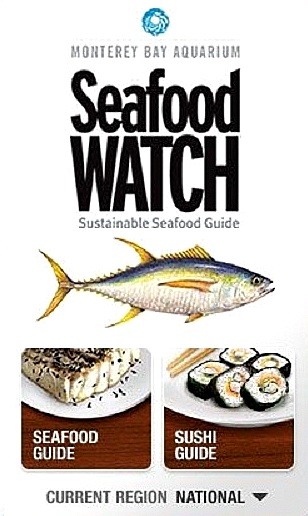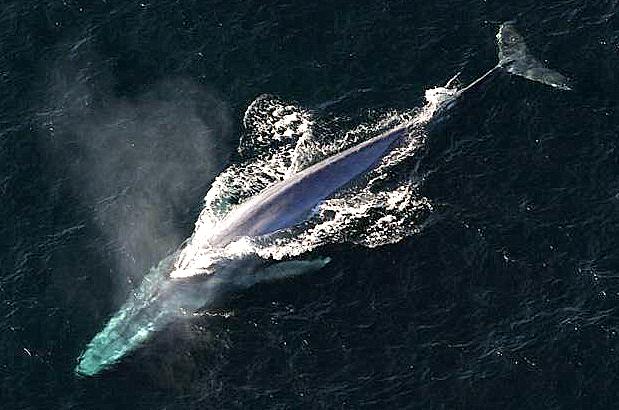Recovering Marine Populations, 2 Examples
Seafood Watch logo (credit: Monterrey Bay Aquarium)
Fish species can recover if given half a chance. Reports from California's Monterrey Bay Aquarium provide the status of commercial fish species for anyone interested. The Aquarium's Seafood Watch program publishes regular updates on the recovery of stocks for populations of fish that have been depleted by overfishing. Their latest recommendations include the status of Atlantic and lake sturgeon species; Dolphinfish; Lake whitefish; Northern pike; and Walleye, among others.
Seafood Watch also offers suggestions on fresh fish alternatives or 'best choice' options for consumers. The reports reflect a continuing pattern of improvement from efforts toward more sustainable fishery management around US coastal zones.

Sustainable Seafood Guide, Seafood Watch
A second development in marine conservation shows that blue whale populations are recovering in US coastal waters. Research at the University of Washington report nearly 2,200 blue whales have repopulated ~97% of their historical range along the California coast. Blue whales are the largest animals on Earth and were pushed to near extinction by whaling until it was banned in 1966.
According to the study's lead author and marine ecologist Cole Monnahan:
The recovery of California blue whales from whaling demonstrates the ability of whale populations to rebuild under careful management and conservation measures. Blue whales are recovering because we took action to stop catches and start monitoring.

California blue whale (credit: NOAA)
Restoration of marine fish, bird, and mammal populations was fostered by the establishment of officially designated 'marine protected areas' or MPA's.
Populations can recover when environmental stresses are removed and conservation management is practiced. Whale watchers and anyone who loves a fish taco should rejoice as marine stocks recover but such successes need to be replicated worldwide to sustain all marine ecosystems. WHB